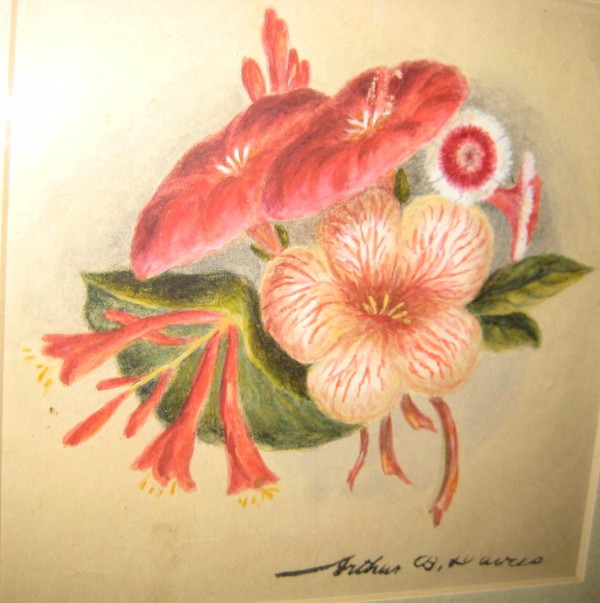-
Artist: Arthur Bowen Davies (American, 1863-1928)
Arthur Bowen Davies
“Arthur Bowen Davies, the fourth of five children, was born in Utica, New York. His first formal art training was at the Art Institute of Chicago in the early 1880s. By the end of the decade, Davies moved to New York City and began exhibiting his artwork” (1).
“By 1887 he was working as an illustrator for Century magazine. A realist landscape painter in the 19th-century academic tradition, he was influenced by the painters of the Hudson River school and particularly by the luminist [sic], dream-like landscapes of George Inness” (2).
“In 1893, he made the first of many trips to Europe, visiting Holland, Paris, and London, studying contemporary art on the Continent. . During this period his works were keenly influenced by Pierre Puvis de Chavannes, French Symbolist Painter and Mural Painter of the second half of the 19th century and the Dutch realist painters, the Maris brothers. Upon his return to the United States, he again traveled throughout the United States. His marriage to a medical doctor, Virginia Davis, in 1892 prompted a move to Congers New York, where Davies tried unsuccessfully to farm. The neighboring countryside, however, became a new backdrop for his watercolors, pastels and small oil panels of the period” (1).
“As president of the Association of American Painters and Sculptors, Davies personally selected many of the contemporary European painting for the landmark 1913 Armory Show, in which six of his own works were exhibited. Davies was also responsible for aiding Alfred H. Barr, Jr. in the foundation of the Museum of Modern Art in New York. Despite rejecting avant-garde styles in his own work, Davies remained a staunch supporter of abstract art throughout his life. Davies’s painting won numerous honors in his lifetime, among them the first Clark Prize at the Corcoran Biennial of 1916; the year Duncan Phillips began collecting his work” (3).
“In his own work Davies was interested in the visual depiction of movement, but rather than pursue an abstract Synchromist style he adopted a narrative realist format inspired at one point by the dancer Isadora Duncan, for example Rhythms (c. 1910; Milwaukee, WI, A. Mus.). He took up yoga and developed a theory of inhalation as part of his interest in eurhythmics, which at the end of his life became crucial to his ideas of ‘continuous composition’, as realized in works such as Falling Figures (c. 1922; New York, James Graham & Sons)” (2).
“Arthur B Davies died in Florence in 1928. The Metropolitan Museum of Art held a memorial exhibition two years after his death” (1).
Reference:
1.
Askart staff. Arthur Bowen Davies [internet]. [cited 2015 July 25]. Available from: http://www.askart.com/artist_bio/Arthur_Bowen_Davies/7761/Arthur_Bowen_Davies.aspx
2.
Artmagick Staff. Arthur Bowen Davies [internet]. 1996 [updated 2015; cited 2015 July 25]. Available from: http://www.artmagick.com/pictures/artist.aspx?artist=arthur-bowen-davies
3.
The Philips Collection. Arthur Bowen Davies (1862-1928) [internet]. [cited 2015 July 25]. Available from: http://www.phillipscollection.org/research/american_art/bios/davies-bio.htm
